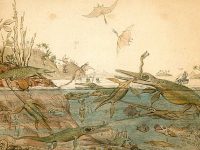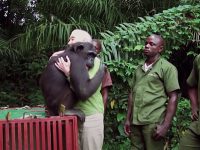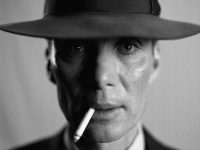Darwin’s Garden
Pigeons, orchids, carnivorous plants, primroses, Creepers and earthworms
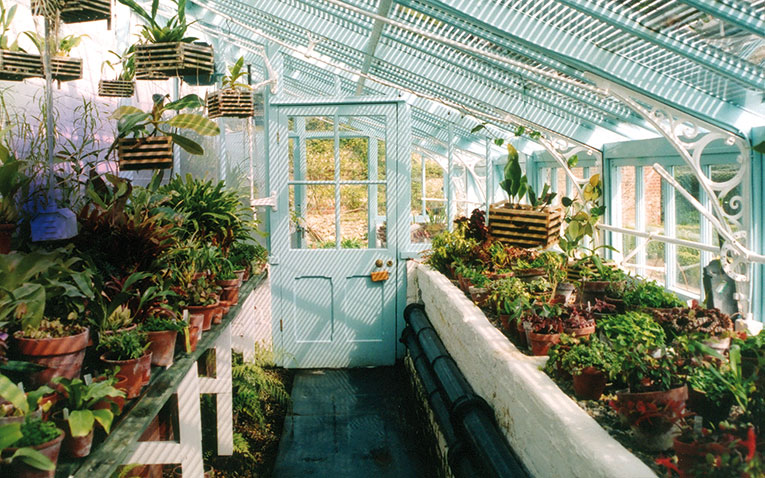
Darwin’s Harvest: Pigeons, Orchids, Carnivorous Plants, Primroses, Creepers and Earthworms. Charles Darwin has been, without doubt, one of the most transcendental scientists of all times. Nevertheless, some researchers have objected that his work is based more on the collection of data taken from other sources than fruit of his own research. This criticism is not at all true –even though its dissemination has been widespread–, and the work he carried out at Down House was one of the important foundations on which his train of evolutionary thought grew. His work encompassed barnacles to earthworms, going on to laborious studies of pigeons and orchids, which all contributed to creating his extensive scientific corpus.
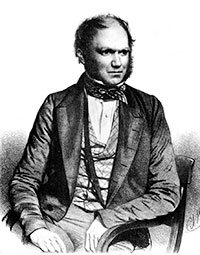
«There something in many distinguished men from England or North America that makes them simple “amateurs”. William James, the journalist; Lord Kelvin, the engineer; Darwin, the huntsman; and even, up to a point, Newton himself, are evidence of this phenomenon», wrote Eugeni D’Ors in La vall de Josafat (Josaphat valley). The statement is rather forced, but there is some truth behind it. The truth is there was a tendency to dilettantism in England, probably much stronger than in France or Germany. Charles Darwin himself was not a man of science that worked for some or other institution for a salary (as Lyell, Hooker or Henslow did); he was an «amateur» scientist, as his grandfather, Erasmus Darwin— a doctor—, had been. That is why Ors allowed himself to make the following question in another essay regarding vocation: «Don’t we owe precisely the most important products of the history of the Spirit to indecision in choosing a professional career? Darwin, for instance, is an example of a failed sportsman and hunter». This position may seem extreme, should it not be for his father Robert Darwin’s own words: « You only care about hunting, hounds and collecting bugs, and you will be a disgrace for yourself and for the whole family».
Darwin’s dilettantism, so frowned upon by his father, became an unexpected work. Darwin’s love for insect collection, hunting and the country made him eventually a thinker and a Nature philosopher. Nothing pointed to this change— young Darwin was not an outstanding student from which you might expect an important piece of work, and even less that he would revolutionise his own time. Darwin was a failed sportsman and huntsman —maybe his passion for nature sprang from his love for hounds and sports. But even so, his innate vocation led to one of the most important events in history.
«Darwin’s love for insect collection, hunting and the country made him eventually a thinker and a Nature philosopher»
In many aspects, Charles Darwin was a self-taught person. He learnt some botany with John Stevens Henslow, some marine biology with Robert Grant, and some geology with Adam Sedgwick. However, he spent a short time with each one of them. He never became a specialist in any zoological group— his coleoptera were to be studied by professional entomologists; his birds, described by John Gould and his fossils by Richard Owen. Therefore, Darwin’s recruitment for a South American circumnavigation trip on board of the H.M.S. Beagle no es va efectuar com a naturalista (de fet ja hi havia un naturalista professional a bord), Beagle was not requested because he was a naturalist (in fact, there was already a professional naturalist onboard), but was hired to collect evidence of the Flood. Young Darwin was reverend William Paley’s follower, author of Natural Theology, where harmony in nature is explained by God’s infinite wisdom— a theological view of natural history.
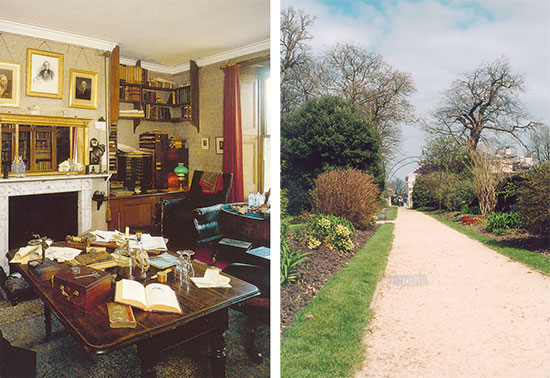
The Beagle‘s trip changed that young man forever. This kind of training trips changed many other geniuses’ lives— London changed Voltaire; Goethe was changed by his Italian trip; and the Beagle trip caused one of the most spectacular metamorphoses in science history. Nobody would have risked anything for that man, but his vocation changed its course and this change was very fruitful. However, Darwin did not specialise in any of the groups during his trip. In fact, he did not describe any of the species he discovered, and let other naturalists —more learned and prepared— do the task. Some of them named taxons after Darwin himself like the dwarf ostrich— Rhea darwinii. He kept his dilettantism for some time during the trip, and most of his fruitful work at the time was done as a geologist. Darwin developed a theory on coral reefs, which proved to be mistaken at some points, fact that made him uncomfortable for most of his life. Only after the success of The Voyage of the Beagle –in an Alexander von Humboldt-like style—, and after he got married to his cousin Emma Wedgwood and had moved to Down, did Darwin start to think about sticking to one group and become an specialist. But none of the groups seemed to be more appealing than the others— he had given up on beetles long ago, birds were being brilliantly studied by his friend Gould, he was not very much interested in botany, fossils were Owen’s territory… Jean-Baptiste Lamarck had written in 1809 that marine invertebrates would give us the clues to understand how the big groups had evolved and, according to Rebecca Stott, this led him to choose a marine animal group that had been scarcely studied, that was biologically appealing, and that was easily available, having samples of this animal sent from all over the world. He chose barnacles— they were small enough and could be easily sent by post, had not been previously study in depth, were biologically complex and were easily conserved in alcohol. He intended to become an specialist, to have his own field of research and work on a specific taxon in natural history, avoiding thus being accused of being a speculator, or a compiler of someone else’s discoveries. He wanted to stop being an amateur and become a professional of natural history.
Professor Long’s Barnacles

From 1846 to 1854 Darwin’s life revolved around barnacles («glued to his microscope, as Stott puts it). Darwin got many samples delivered at his house in Down thanks to the recent improvements of the English postal system. Darwin himself talked about it in his biography: «I worked steadily on the subject for the next eight years, and ultimately published two thick volumes, describing all the known living species, and two thin quartos on the extinct species. I do not doubt that Sir E. Lytton Bulwer had me in his mind when he introduces in one of his novels a Professor Long, who had written two huge volumes on Limpets.»
Indeed, his contemporaries were amused by the fact that a naturalist of Darwin’s fame— he had become popular with the publication of The Voyage of the Beagle– devoted so much time and effort to limpets. Even George Eliot herself, in her memorable novel Middlemarch:A Study of Provincial Life, ridiculed a naturalist that, retired in the country, devoted his time to activities of doubtful profitability: «fancy I have made an exhaustive study of the entomology of this district […] You don’t know what it is to want spiritual tobacco—bad emendations of old texts, or small items about a variety of Aphis brassicae, with the well-known signature of Philomicron». Charles Darwin became—in the eyes of his community— an eccentric specialist on the smallest creatures, a Philomicron or a stubborn professor Long, keen on studying things nobody cares about.
This perception is especially true since Darwin had outlined a draft of his theory of the evolution of species as early as 1838: « In October 1838 […] I happened to read for amusement ‘Malthus on Population,’ and being well prepared to appreciate the struggle for existence which everywhere goes on from long-continued observation of the habits of animals and plants, it at once struck me that under these circumstances favourable variations would tend to be preserved, and unfavourable ones to be destroyed. The result of this would be the formation of new species. Here then I had at last got a theory by which to work». The Malthusian text was the catalyst for the work of his lifetime. In this context, the long years devoted to barnacles and other crustaceans are very surprising and could even be branded irresponsible. Darwin tried to justify himself: « My work on the Cirripedia possesses, I think, considerable value, as besides describing several new and remarkable forms, I made out the homologies of the various parts—I discovered the cementing apparatus, though I blundered dreadfully about the cement glands—and lastly I proved the existence in certain genera of minute males complemental to and parasitic on the hermaphrodites». Doubtless his discoveries —and mistakes! — would have amused both Lytton Bulwer and George Eliot. Eight years working on limpets! Darwin was aware of this and fast enough admitted that «Nevertheless, I doubt whether the work was worth the consumption of so much time».
However, some biographers do not share this opinion. Thanks to his intense postal activity all along those years studying barnacles, Darwin made some acquaintances that would prove to be useful for his following books. Likewise, according to Rebecca Stott, that work showed his authority in a field of zoology, gained respect among taxonomists and was awarded a medal of the Royal Society.
From Philomicron to Philoperisteron
The main difference between science and humanities is the fact of discovery. Priority is an essential factor of science’s mechanism. Charles Darwin had spent many years working on his natural selection thesis. After his studies on barnacles, he started a thorough analysis of variations in domestic plants and animals. As explained in Michael Boulter’s Darwin’s garden, he was interested in studying whether what he had found out in crustaceans happened in other beings as well. He hoped to find universal mechanisms in reproduction, in the selection of the best individuals, and assess how small changes added up until a new species or variety appears. Along these lines, Darwin’s interest focused on the different pigeon varieties (more than 150), and tried to prove all those varieties and races, so different from one another, had one common wild ancestor. He supported the idea that it had been humans who had patiently contributed to create this biodiversity. From a barnacle specialist, he became a pigeon expert, taking part in the activities organised by the Philoperisteron Society. He built a pigeon loft at Down House, and acquired a wide range of pigeons to crossbreed them and observe the results. According to Boulter. Darwin carried out the task of boiling the pigeons’ skeletons in caustic soda, clean up the bones and measure variations between the crosses. He also did this with rabbits, geese, peacocks, pigs and many other domestic animals, task that required tenacity and an unshakeable will, which took him several hours of study.
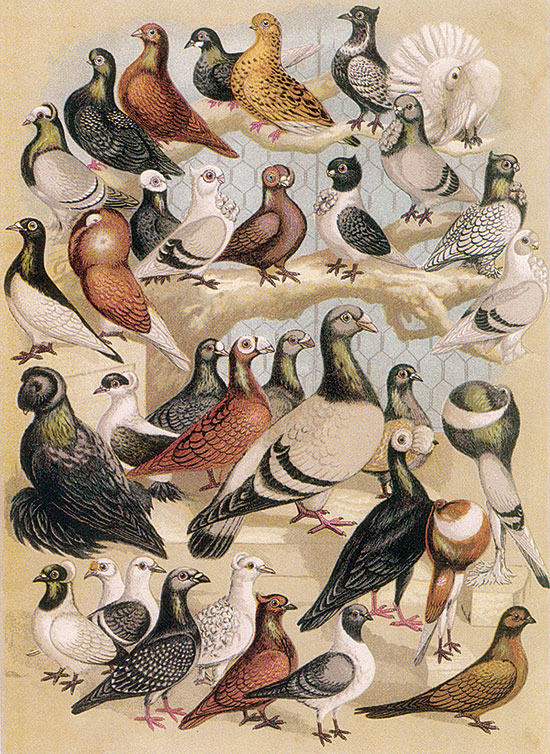
«Charles Darwin became an eccentric specialist on the smallest creatures, a Philomicron or a stubborn professor Long, keen on studying things nobody cares about»
By 1858 he had not yet published a single line of his theory of the evolution of species. Twenty years had elapsed since 1838, since that intellectual «rush» which was the result of his reading Malthus’ works. Explaining the reasons for his remaining silent for so long would be tedious and complex, but they certainly were a mixture of prudence, rigour and fear of the impact his ideas may cause, which could be easily branded heretic. Before making them public, he decided to gather as many data as possible, from barnacles to variations in domestic plants and animals, with the intention of publishing the results in a book he had entitled The Big Species Book. This is why he fell in depression when, in 1858, Alfred Russel Wallace—a young researcher who was in Malaysia at the moment— sent him a letter explaining point by point a very similar thesis to his own. Wallace had drawn the same conclusions from reading Malthus’ work.
In the end, Darwin and Wallace presented their ideas in a joint act held by the Linnean Society which had little repercussion; up to the point that, when the president of the society made a summary of the more significant events of that year he concluded that there had been no remarkable discoveries. However, the next year, when Darwin published a summary of his ideas entitled On the Origin of Species by Means of Natural Selection, or the Preservation of Favoured Races in the Struggle for Life, lwhose first edition lasted only hours, and its second only a few days. Suddenly, the limpet expert revolutionised, to everyone’s surprise, his society. It also changed his life forever.
Orchidophile Darwin
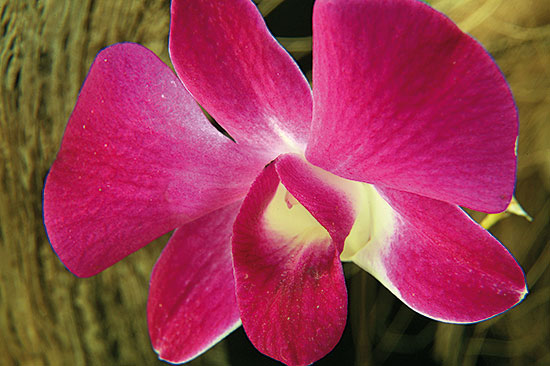
Darwin and Wallace admired each other very much. Wallace never ceased to acknowledge his partner’s importance and excellence. When he was sent and read On the Origin of Species, he was impressed by the power of his arguments and the scope of the theory. Wallace predicted a similar future for this book to Newton’s Principia. However, not all reactions were equally enthusiastic, and just as he had feared, he started getting letters which said that his ideas were heretic. On of the first of this letters was sent by his old geology professor, Adam Sedgwick, who had «read the book with more pain than pleasure». Captain Fitz-Roy also sent him a letter telling him that he could not find anything ennobling in the thought of descending from the oldest apes. Likewise, some remarkable naturalists rejected natural selection. Richard Owen concluded: «We do not want to know what Darwin believes and is convinced of, but what he can prove». Without a doubt, this statement hurt him very deeply and made him be much more demanding with his research and the accuracy of his results.
Maybe that is why, after publishing On the Origin of Species, Darwin drew his attention to orchids. The mountains surrounding his house at Down, North West Kent, provided him with a good and interesting sample of species. Browne points out that up until then orchids were thought of as the most sublime piece created by God’s hand, and Darwin tried to prove that the existence of even those extraordinary plants could be explained as the result of a wonderful combination of evolutionary adaptations. Thus, his next research was not randomly selected— it intended not only to strengthen his theory, but also to diminish his creationist adversaries’ prestige. Orchids would help proving that their sublime «wits» were not the work of an almighty God, but the result of natural selection.


The results of his new research were published in Fertilisation of Orchids, a very interesting essay where Darwin’s method triumphs. Darwin contacted professional botanists, but also gardening amateurs, collectors… anyone who may provide interesting data. He made used of all his acquaintances— both in the scientific and the bourgeois sphere— and especially established relations with amateur female gardeners. One of them, Lady Dorothy Nevill, who provided a good sample of orchids and carnivore plants for him, wrote to a friend: «I am so pleased to help in any way the labours of such a man— it is quite an excitement for me in my quiet life, my intercourse with him—he promises to pay me a visit when in London. I am sure he will find I am the missing link between man and apes.»
But Hooker was his best helper, who patiently received Darwin’s requests to send him «spare» plants from the botanic garden at Kew. When, in spite of Hooker’s good will, Darwin was not able to get some species, he did not hesitate to resort to the press and advertise himself asking for amateur collaboration. In the meantime, Darwin would walk around the country at Kent, examining wild orchids and trying to catch their pollinators with his children’s help. He worked as a botanist, an entomologist, a physiologist and an anatomist— nothing escaped his examination nor his curiosity. These probably were the happiest years of his life, surrounded by his family in the countryside, carrying out experiments and analysing the different flower parts.
«Darwin wanted to prove that orchids, thought of as the most sublime piece of God’s creation, could be explained as the result of a wonderful combination of evolutionary adaptations»
Darwin also improved his methodology for studying animals during these years. From these walks sprang his subsequent botanical research projects on carnivore plants, on the complexity of primrose fertilisation, on creeper tropism, on the positive effect of worms in the soil…He discovered a whole world of interactions, of unexpected adaptations, beside his house. His good friend, Asa Gray, in spite of being a very religious man, claimed that if the orchid book —including some omissions— had been published before On the Origin of Species the author would have been «canonised» instead of «anathematised» by natural theologians.
Darwin studied the different orchid families as well as their reproductive mechanisms. He proved that their flowers, in spite of usually having both masculine and feminine reproductive organs, they avoided self-fertilisation, and for this reason attracted insects with their spectacular inflorescences, extraordinarily prepared for reproduction. From the perfect schemes of the Orchisgenus, whose colourful and aromatic flowers attract many butterfly species —both diurnal and nocturnal—, to the Epipactis genus, which live in marshes and use their labellum (a very big petal) as bait, catching the insect and forcing it to get out necessarily by the pollen mass, taking pollen with it. Indeed, it was a very beautiful job. He worked very hard. If orchids had been at first only a distraction, sheer entertainment, even a therapy during the hard time he had after the publication of his theory of evolution, little by little became a strong argument to support his theory with. However, at the same time, his studies showed that, far from that perfect design held by natural theologians, nature evolved very randomly and using the same structures once and again depending on its needs. This is how Darwin developed a new idea of how natural selection works.
The poor evil…
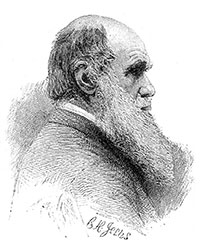
From his research on orchids onwards, Darwin worked on his data compilation works and with research books at the same time. He published the results of all his experiments on variations in domestic plants and animals in 1868, two volumes of a thousand pages each. In 1871, he published The Descent of Man, rounded off with The Expression of Emotions in Man and Animals, published a year later, which is considered the beginning of human ethology. In 1875, he wrote a book on carnivore plants, and a long essay on the effects of self-fertilisation in the plant kingdom. In 1877, he finished his research on the efforts plants make to avoid self-fertilisation in The Different Forms of Flowers.
The barnacle specialist became one of the most productive and dazzling naturalists of all time. He was interested in everything, nothing escaped his examination, he applied his theory of the survival of the fittest to everything, he searched tenaciously —almost desperately— biodiversity’s raison d’être. The naturalist was determined to prove, with every detail he saw fit, that his conclusions were not mere speculations, but were drawn after months, even years, of experimentation. He recorded and wrote down every detail, up to the point of exasperating the readers (the 400 pages on carnivore plants —and almost 200 of them devoted to the Drosera, genus— are a good example of this). If Darwin was willing, he could be very educational —he has even been considered one of the best rhetoricians in science— but he did not hesitate to «show» everything he knew, despite knowing that all the data was not really necessary.
However, he let himself be carried away by speculation in The Variation of Plants and Animals under Domestication— in order to explain mechanisms of heredity he suggested the pangenesis theory. The last chapters in this book —generally forgotten by scientists— are very suggestive as well as revealing. Even though Mendel had already published his results, Darwin was not aware of them, and suggested a very speculative explanation—every part of a living body was supposed to produce particles of inheritance («gemmules») which the body sent to the organs of reproduction. The effort and time invested in explaining which are the mechanisms and the «substance» responsible for the transfer of traits was spectacular. In some way, Darwin was on the verge of discovering genetics.
«He was interested in everything, nothing escaped his examination, he applied his theory of the survival of the fittest to everything, he searched tenaciously biodiversity’s raison d’être»
But the theory of pangenesis— or «provisional hypothesis», as Darwin himself called it— was highly criticised. He himself collected a great deal of the objections raised against it for the second edition of the book — expanded and revised— but found himself unable to give an answer to the many questions that had been raised. His claims were not supported by any kind of experimental evidence. What is worse, the experiments carried out later on by Darwin’s second cousin, Francis Galton, were a resounding failure. Gemmules were a pipe dream and Darwin was unable to prove their existence. At some points he used Lamarckist arguments; at others he appealed to other mechanisms different from natural selection. He ended up regretting his «provisional hypothesis», and expressed his terrible doubts to his good friend Hooker:
I fear Pangenesis is still-born. Bates says he has read it twice and is not sure that he understands it. H. Spencer says the view is quite different from his […] and he says he is not sure he understands it. […] Am I not a poor Devil?
However, many of his intuitions turned out to be true and in many aspects they remind us of Neo-Darwinist postulates— a living organism is a microcosm, a small universe, formed by many organisms that are self-propagating, unconceivable small an as numerous as the stars in the night sky.
Philoannelida, the earth-worm lover
Darwin devoted his last efforts to the study of the beneficial role earthworms play in the English countryside. The limpet-lover became a great earthworm defender. In Stephen Jay Gould’s Worm for a Century and Al Seasons, contextualised this strange and often misinterpreted text by Darwin — « To argue that Darwin was merely a competent naturalist mired in trivial detail, these detractors pointed out that most of his books are about minutiae or funny little problems — the habits of climbing plants, why flowers of different form are sometimes found on the same plant, how orchids are fertilized by insects, four volumes on the taxonomy of barnacles, and finally, how worms chum the soil. Yet all these books have both a manifest and a deeper or implicit theme — and detractors missed the second (probably because they didn’t read the books and drew conclusions from the titles alone)». Indeed, Darwin had been scarcely read and misinterpreted. An evidence of this is the fact that there is only one version of some of his books in Spanish. Darwin’s text on earthworms was his last and brilliant work to prove that these «humble» organisms are really useful for agriculture. Sir Albert Howard pointed out that few texts are so helpful for present-day farmers and land-workers than Darwin’s. By the end of the 19th century, agriculture was thought of as branch of chemistry— they thought that everything was a matter of soil, water and appropriate fertilisers. In so reductionist a context, Darwin introduced the living organisms’ role as main soil formers.
This shows that Darwin was not merely a data compiler, as many have argued, but a capable and skilled experimenter. On the other hand, his experiments were not a joyful hobby, but behind his tedious trials there was always the will to contrast his evolutionary theses. Pigeons, orchids, carnivorous plants, primroses, creepers and earthworms were his allies, his army, with which he fought against dogmatism and creationism. Down House was the birthplace —or headquarters if you please— of evolutionism and modern biology.
NOTES
1. Jacques Barzun in Darwin, Marx, Wagner: Critique of a Heritage (1941). He is even disregarded as one of the great thinkers.
Referenes
Boulter, M., 2008. Darwin's garden. Down house and «The Origin of Species». Constable. London.
Browne, J., 2002. Charles Darwin. The power of place. Princeton University Press. New Jersey.
Darwin, Ch., 1887. The life and letters of Charles Darwin, including an autobiographical chapter. Francis Darwin (ed.). John Murray. London.
Darwin, Ch., 1977. Autobiografía y cartas escogidas, vol. 1 & 2. Alianza editorial. Madrid.
Darwin, Ch., 1999. Cartas de Darwin. Frederick Burjhardt (ed.). Cambridge University Press. Cambridge.
Darwin, Ch., 2009 (in press). La variación en animales y plantas domésticos. Laetoli. Pamplona.
Domínguez, M., 2007. Introduction to La fecundación de las orquídeas de Charles Darwin. Laetoli. Pamplona.
D'Ors, E., 1987. La Vall de Josafat. Quaderns Crema. Barcelona.
Eliot, G., 1991. Middlemarch, un estudio de la vida en provincias. Mondadori. Barcelona.
Gould, S. J., 2008. «La lombriz del siglo y de todas las épocas». Dientes de gallina y dedos de caballo. Drakontos bolsillo. Barcelona.
Howard, A., 1956. Darwin on humus and the earthworm. Faber and Faber limited. London.
Stott, R., 2003. Darwin and the barnacle. The story of one tiny creature and history's most spectacular scientific breakthrough. Faber and Faber. London.

